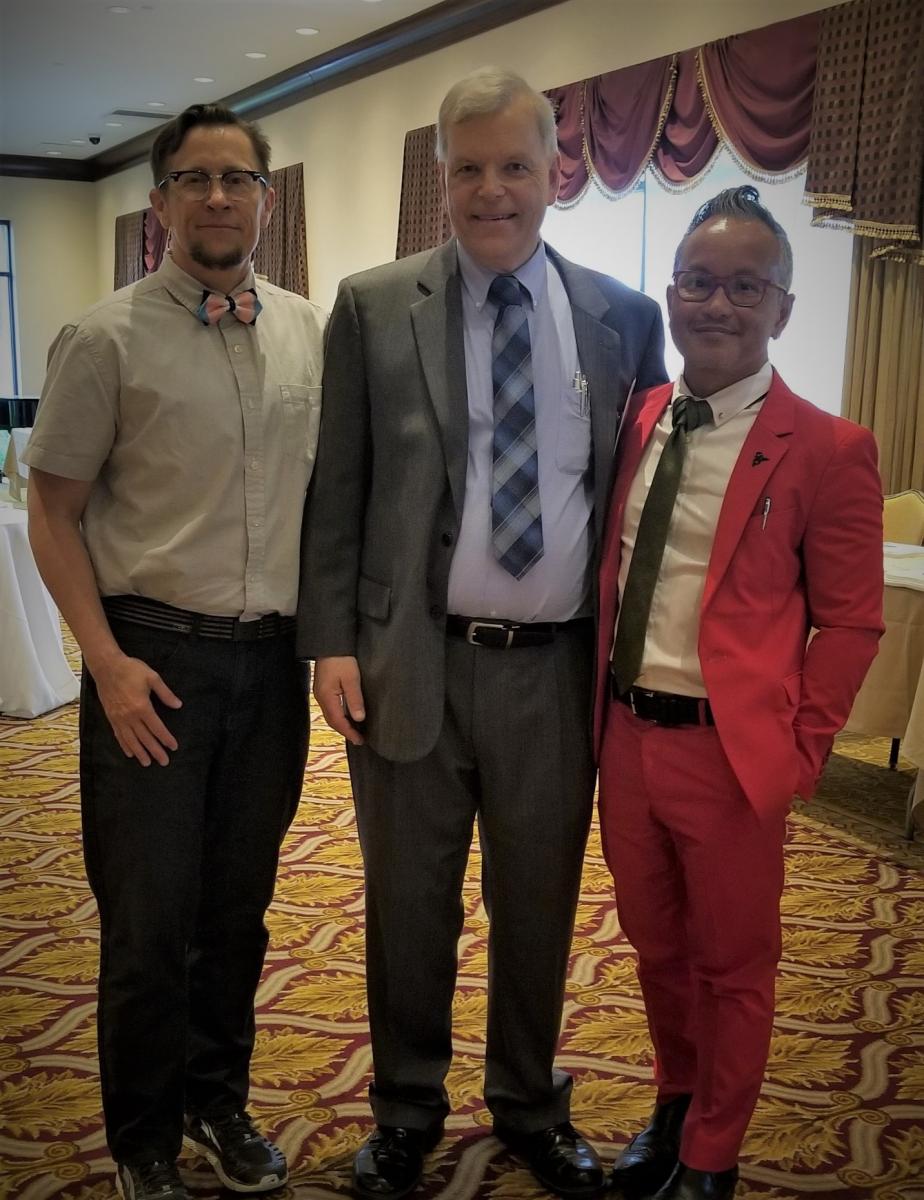You may have seen recently that ASCO is surveying U.S. oncology health care professionals to better understand how sexual orientation and gender identity data is collected in cancer research and care. The findings will help identify gaps in data collection and care that need to be addressed to improve outcomes for patients.
Last summer, I shared my own experience in caring for a transgender patient, and I’m sharing it again as an important reminder of the information that is needed to help address health disparities among sexual and gender minority populations. Sexual and gender minority populations, including individuals who are lesbian, gay, bisexual, transgender, and intersex, are at risk for receiving disparate care and having suboptimal experiences in their cancer care. My own experience taught me that assumptions can create barriers to care, and because of it, we must address them in order to improve, and evolve.
Taking just 15 minutes to participate in this important ASCO survey is one way we can help address disparities in care among these vulnerable populations and support ASCO’s mission to ensure high-quality and equitable cancer care for all patients. The survey closes on November 23, 2020. [Editor's note: the survey is now closed. ASCO thanks all those who participated.] For families like the one below, and for my own, please help.
Caring for Transgender Patients With Cancer
Originally published in "Discussions with Don S. Dizon" on The Oncologist on June 18, 2019, and on ASCO Connection on June 25, 2019; updated November 20, 2020.
I had just started practicing in Providence and, as is my usual practice, had glanced at the charts of new patients being referred to see what their diagnosis was so I could focus on what we would be talking about. I moved through clinic seeing my patients, ensuring each was doing as well as could be expected, and that symptoms were managed. I entered the room of a patient I was meeting for the first time, and seated there were two people. I assumed they were married—both had a ring on their left finger. I approached the woman at that point, and introduced myself, expressing that I was sorry to be meeting her after her diagnosis of ovarian cancer. She seemed to stiffen as I held out my hand and looked…defensive.
“Actually,” she said. “I am not the patient. He is.” I was confused at first, but did my best not to show it. I remember turning to the only other person in the room, who outwardly appeared male.
“Yup, I’m transgender. And I’m the one with ovarian cancer.”
For a moment, I did not know what to say or do. “I am so sorry,” I said, and then after a pause I asked, “Can we start over?”
They both laughed—nervously, I thought—as I sat down to face them both.
“My name is Don Dizon…” I went into my own background—that I was a medical oncologist, specializing in gynecologic cancers, like this. I discussed his diagnosis and the approach to treatment. I explained the risks and side effects as I would do with any other person. Very quickly, him being trans was no longer even on my mind, I was simply speaking with another person with ovarian cancer.
I’d like to think I handled things well, and that I did not betray any sort of discomfort. But truth is, I know now I could have done better. At the time, I remember how I tried not to use pronouns—I was not sure if I should use “he” or “she”; he had referred to his partner as his wife, so I did use that liberally. Now I realize that avoiding pronouns is not welcoming; instead I should have just asked quickly to confirm that he wanted to be referred to as “he.”
I also remember the first time I did a pelvic exam. I was almost bashful about this—embarrassed, for both of us. Now I understand that the more matter-of-factly I approach issues like this, the more I help reassure the patient. I also realize that if my office had collected sexual orientation and gender identity data on the intake form, I wouldn’t have made the original gaffe about his wife.
I have to say, I learned how to be a better doctor by caring for him and his wife, and I got to know them both beyond the cancer journey. I learned of his family, and how much support they were. I learned about his community, and met friends who would come with him to clinic and stay with him through treatment. I also saw how our staff treated them—with respect and dignity. I would see him laugh with our nurses and interact with other patients. He had become part of our family—a circle of providers, patients, loved ones, nurses—the heart of each and every cancer center. At these moments, I was incredibly proud of our institution.
I realize that not all LGBTQ+ patients have this kind of experience. I also understand that providers, whether we are doctors or nurses, advanced practice providers or medical assistants, may not be fully prepared on how to care for, let alone communicate with, transgender patients. We make assumptions at our visits, like the ones I did: that the “female” in the room is obviously our patient, or that the two women coming in together must be best friends, nothing more. But, these assumptions can create barriers to care, and because of it, we must address them in order to improve, and evolve.
Acknowledgment: Huge thanks to Scout for helping me write this column.

Left to right: Scout, Deputy Director of the National LGBT Cancer Network; Joe Dziobek, Director of the Partnership to Reduce Cancer in Rhode Island, and me.


Recent posts